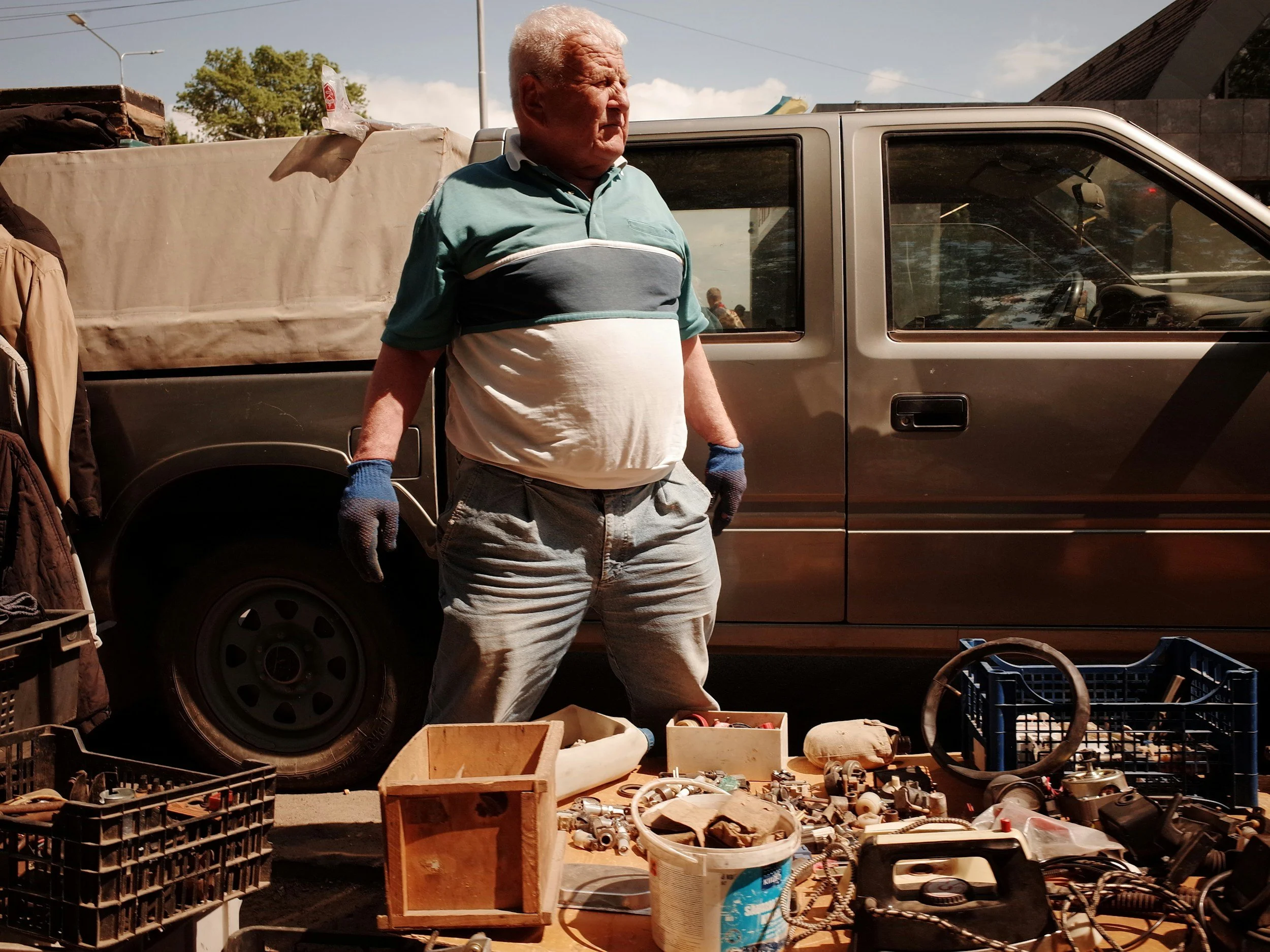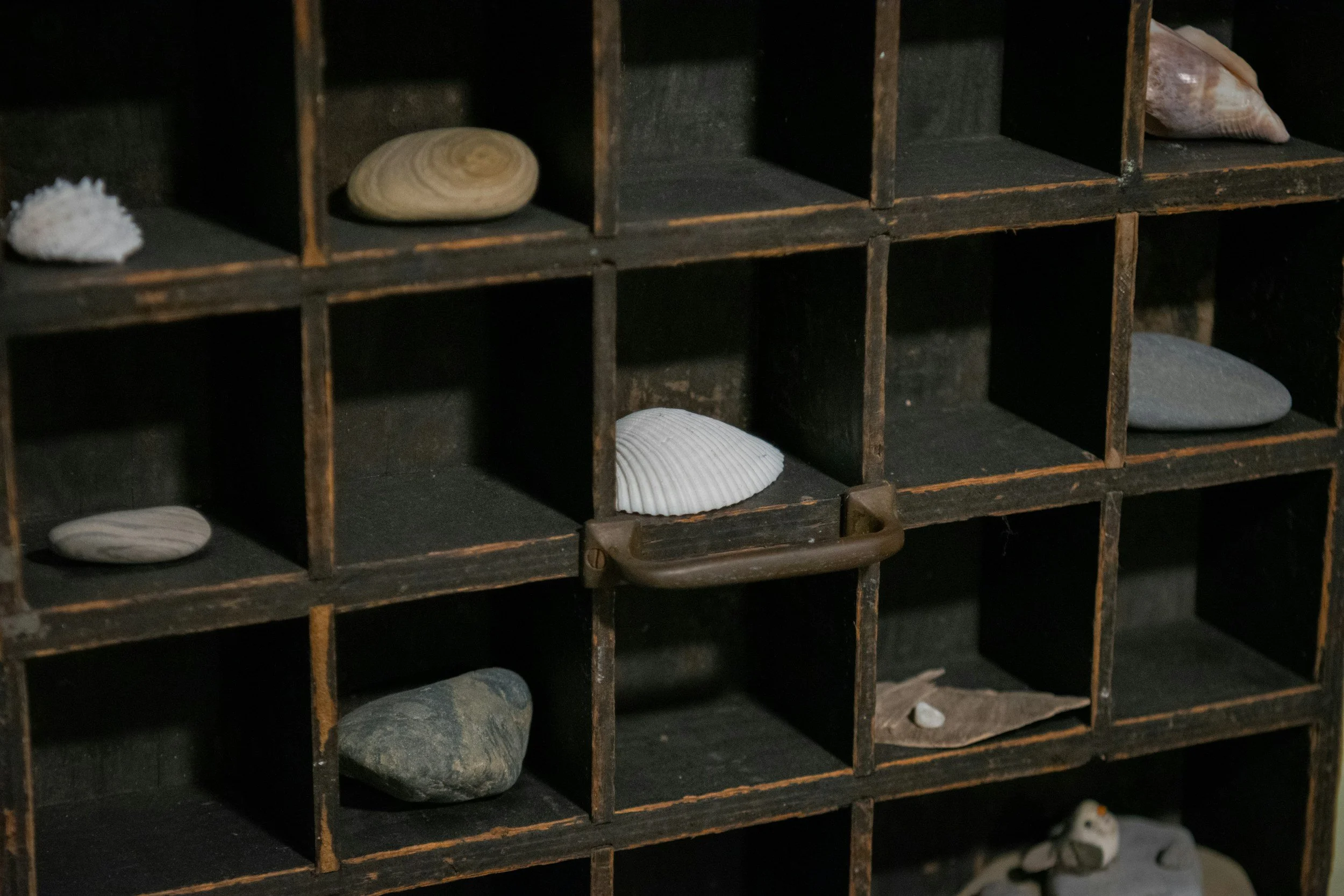Good Company
Collections, quirks, and the play of identity.
We all know someone whose home is overflowing, every shelf stacked, every cupboard groaning. There is a fine line between being a hoarder and a collector, and it can be finer than we think. One weighs you down, the other gives shape and meaning.
For centuries people have gathered objects, from Renaissance rooms filled with shells and fossils to today’s flea-market finds and record shelves. It is instinct, part curiosity, part memory, part identity. When arranged with thought, the things we hold onto stop being clutter. They become companions that give rooms rhythm and a sense of life.
Domenico Remps, Cabinet of Curiosities, 1690, Museo dell’Opificio delle Pietre Dure, Florence, Italy.
The Urge to Gather
Why we collect.
There is something deeply human about wanting to hold onto objects. Psychologists say it helps us create order, mark identity, or keep memories alive. That is why a chipped vase can mean more than a new one from the shop. It links us to a moment or a person.
For some, it is about control. When life feels messy, lining up books or ceramics can bring calm. For others, it is the thrill of the chase, the weekend op-shop wander that ends with an enamel jug or a vintage poster under your arm. It does not have to be expensive, it just has to feel like yours.
Every collection is a portrait. A wall of guitars, a shelf of vintage cameras, or sneakers lined up like trophies all tell a visitor who you are.
I wonder what the owner of this garage is into...
Objects that stay with you
Pieces that earn their place.
Most collections do not start with intent. A few matchbooks, a postcard from a trip, a teapot picked up because it looked right next to the first. Suddenly, a thread runs through your home.
Objects that endure tend to do so quietly. A bowl you touch every day, a painting that still makes you pause years later. Those are the pieces that earn their place.
Collections shift as life moves. What once fascinated might fade, and that is fine. Letting go makes space for what still feels alive. Even two mismatched candlesticks can be the start of something that feels slow, personal, and real.
And sometimes, a collection claims its own corner. A reading chair surrounded by books, a record nook with a soft lamp, or a windowsill filled with small pots and stones. These spaces become shrines to what you love, quiet celebrations of your own curiosities.
Flea markets and vintage shops aren’t just about the hunt but also about the characters you meet.
Finding the line
What ties it together.
For me, it is old brass planter pots. No two are the same, some darkened, some dented, some patterned, but they sit together like family. They have all lived other lives before ending up with me. One even travelled in my hand luggage all the way from Spain and now sits by the window, catching the afternoon light. That mix of stories is what makes them beautiful.
Some collectors chase perfection, like shelves of Japanese vessels or coins catalogued in velvet trays. Others follow feeling, guided by colour, texture, humour, or memory. The thread does not have to be obvious, only real to you.
If your shelves start to groan, edit. Group things so the eye can rest. Rotate displays with the seasons or pack away what no longer sings. Collecting is not about keeping everything. It is about honouring what still holds meaning.
Some of my gorgeous brass pots.
Showing it off
The art of display.
A collection feels strongest when it knows its place. Gather pieces into one area rather than letting them scatter through the house. When everything has its own zone, a shelf, a cabinet, or a single stretch of wall, the eye can rest. It gives the room rhythm, moments of calm beside moments of expression.
Once you have found the right spot, think about how the pieces speak to one another. On open shelves, play with height and texture so your eye moves gently from one thing to the next. A row of ceramics might sit beside a stack of books or a small framed sketch. Leave a little breathing room between objects; it makes what remains feel intentional.
Cabinets work beautifully for pieces that deserve protection. A glass-front cupboard keeps things visible but contained, and even the simplest object feels special when placed inside. A vintage cabinet adds warmth, and a soft light inside can turn it into a quiet focal point.
For tiny treasures or sentimental keepsakes, a shadow box is perfect. Pressed flowers, old postcards, a ticket stub from a trip, once framed together, they stop feeling like clutter and start feeling like memory. Several small boxes grouped on a wall can create their own visual story.
Display is not about perfection. It is about attention. Whether it is a cabinet glowing with ceramics or a single cup catching the morning light on a windowsill, giving an object its place shows care. And that care is what makes a home feel lived in, personal, and deeply yours.
An old drawer with compartments makes for a great display of treasures.
The joy of strange things
Why quirks matter.
The most memorable groupings are rarely perfect. A cracked cup, a crooked jug, a record sleeve creased from use, these quirks give things life. Too much polish can feel sterile while oddities add humanity.
Our fascination with strange things runs deep. From ancient collectors of rare shells to the shelves of today, people have always been drawn to what feels mysterious or one of a kind. The odd, the misshapen, the unexpected remind us that beauty often hides in imperfection.
My own cabinet holds china beside an animal skull and a doll’s head. My daughter thinks it is strange, but it makes me smile. The mix of precious and peculiar keeps a space alive.
Some collections begin as jokes, snow globes or ceramic frogs, and turn into personality. They prove that collecting does not need to be lofty or important to matter. It just needs to feel like you.
I can see hours spent on the beach when I look at this picture.
Collecting is a natural impulse, and there is real joy in following it. The thrill of finding something unexpected, the pleasure of arranging it just so, the quiet admiration each time you pass by, it all brings warmth and a sense of play to a home. The key is to stay mindful. When you give objects space and purpose, they stop being clutter and start reflecting the person who lives among them. What you choose to keep, and how you live with it, says as much about you as any colour on your walls or furniture you buy.
Until next time.
Vera x






